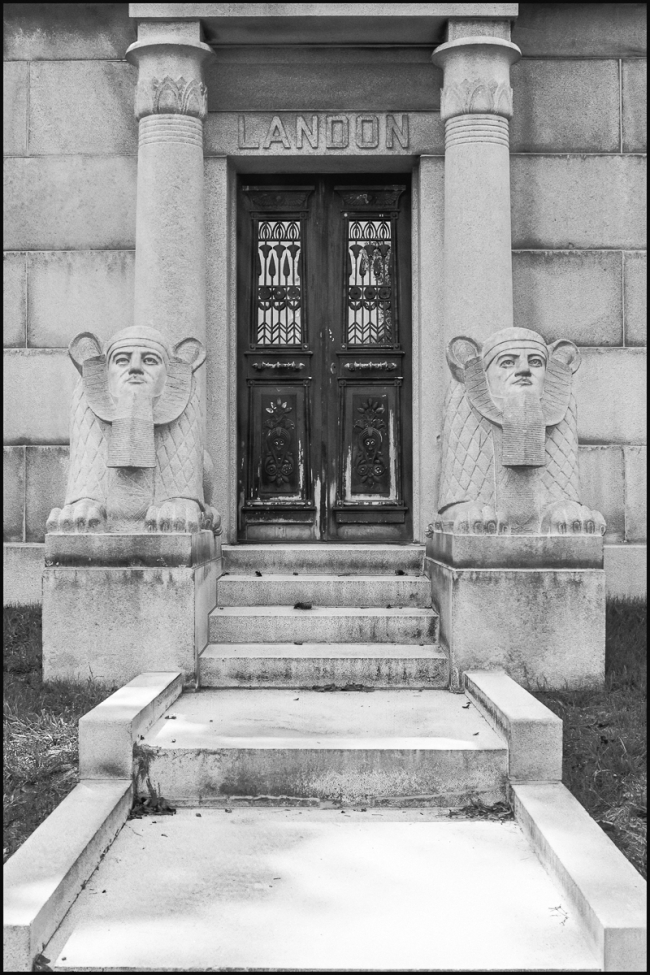Another tomb with a touch of exoticism. The name on it is “Landon” and so far I haven’t been able to discover any additional information about it’s inhabitant.
Doublas Keister’s Stories in Stone. New York. A Field Guide to New York City Area Cemeteries and their residents identifies this architectural style as ‘Egyptian Revival’ and goes on to describe it as follows:
… another tomb style of antiquity, Egyptian, is perhaps the most funerary of all architecture. After all, almost all architecture in ancient Egypt had something to do with death and the afterlife.
American cemeteries have often had a schizophrenic attitude toward Egyptian Revival architecture because of its pagan roots. However, in the New York City area with its diverse population, there doesn’t seem to be any particular aversion to the Egyptian Revival Style.
Almost every Egyptian Revival tomb is adorned with a pair of vulture wings sprouting from a circle (symbolizing the sun) and flanked by twin cobras (symbolizing death). Often a pair of male sphinxes (female sphinxes are Greek) guards the entry to the tomb. Above the entry to the tomb, and usually circling the entire tomb, is an architectural element called a ‘cavetto cornice’ (flared with curve). Other hallmarks of Egyptian Revival architecture are the tapered (battered) entry and hieroglyphics. Since Egyptian architecture doesn’t make use of the strength of arches or tapering columns, its dimensions are quite massive and provide strength, the walls of the Egyptian temple-style mausoleums taper in about 70 degrees.
To soften the pagan demeanor, designers of Egyptian Revival tombs often add selected Christian symbols and statues in front of or on the tomb as ell as religious-themed stained glass windows.
The Landon tomb has many of the elements mentioned above: vulture wings, sun disk and cobras; pair of male sphinxes; massive construction; tapered walls. (Note: some of these are not visible in the above picture.).
The cemetery has lots of other Egyptian-style architecture including pyramids and obelisks.
Taken with a Sony NEX 5N and Sigma 30mm f2.8

